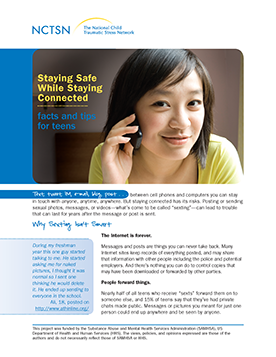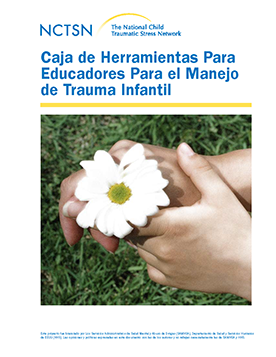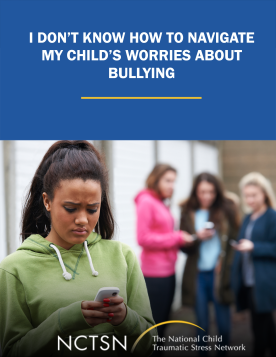
Staying Safe While Staying Connected: Facts and Tips for Teens
Provides information to teens about staying safe while they are online.
October was first declared as National Bullying Prevention Month in 2006. Since then, October has been a time to acknowledge that bullying has devastating effects on children and families such as school avoidance, loss of self-esteem, increased anxiety, and depression. Bullying can occur in multiple ways. It can be verbal, physical, through social exclusion, or via digital sources like email, texts, or social media. Unlike mutual teasing or fighting, bullying occurs when one person or a group of people is perceived as being more powerful than another and takes advantage of that power through repeated physical assaults, threats of harm, intimidation, or by purposefully excluding a person from a valued social group. Being bullied can severely affect the person’s self-image, social interactions, and school performance and can lead to mental health problems such as depression, anxiety, and substance use, and even suicidal thoughts and behaviors.
In 2015, about 21 percent of students ages 12–18 reported being bullied at school during the school year. Of students ages 12–18, about 13 percent reported that they were made fun of, called names, or insulted; 12 percent reported being the subject of rumors; 5 percent reported that they were pushed, shoved, tripped, or spit on; and 5 percent reported being excluded from activities on purpose. Additionally, 4 percent of students reported being threatened with harm, 3 percent reported that others tried to make them do things they did not want to do, and 2 percent reported that their property was destroyed by others on purpose.
The National Child Traumatic Stress Network (NCTSN) has compiled a list of helpful resources for parents and caregivers, children and teens, mental health providers, educators and school staff, and policy makers.

Provides information to teens about staying safe while they are online.

Proporciona a administradores escolares, maestros, personal de la escuela y padres interesados, información básica sobre el trabajo con niños traumatizados en el sistema escolar. Esta es la versión en español de Child Trauma Toolkit for Educators.

Explores personal experiences faced by parents whose children are dealing with bullying in school and the challenges that accompany a successful intervention to stop the bullying behaviors.